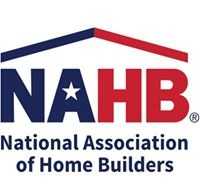WASHINGTON, D.C. – August 7, 2014 – (RealEstateRama) –Markets in 56 of the approximately 350 metro areas nationwide returned to or exceeded their last normal levels of economic and housing activity, according to the National Association of Home Builders/First American Leading Markets Index (LMI), released today. This represents a year-over-year net gain of seven markets.
The index’s nationwide score moved up slightly to .89, meaning that based on current permit, price and employment data, the nationwide average is running at 89 percent of normal economic and housing activity. Meanwhile, 78 percent of markets have shown an improvement year-over-year.
“Things are gradually improving,” said NAHB Chairman Kevin Kelly, a home builder and developer from Wilmington, Del. “As the job market grows, we expect to see a steady release of pent up demand of home buyers.”
Baton Rouge, La., continues to top the list of major metros on the LMI, with a score of 1.39 – or 39 percent better than its last normal market level. Other major metros leading the list include Honolulu; Oklahoma City; Houston and Austin, Texas. Rounding out the top 10 are Los Angeles; San Jose, Calif.; Salt Lake City; Des Moines; and New Orleans.
“With the national tally only reaching 43 percent of normal, single-family housing permits continue to be the lagging component of the index,” said NAHB Chief Economist David Crowe. “The big bright spot is employment, where the number of metro areas having reached or exceeded their norms grew from 26 to 46 in a year.”
“In the 22 metros where permits are at or above normal, the overall index indicates that these markets have fully recovered,” said Kurt Pfotenhauer, vice chairman of First American Title Insurance Co., which co-sponsors the LMI report. “This finding shows the impact that an uptick in permits can have on the overall health of markets.”
Looking at smaller metros, both Odessa and Midland, Texas, boast LMI scores of 2.0 or better, meaning their markets are now at double their strength prior to the recession. Also leading the list of smaller metros are Bismarck, N.D.; Grand Forks, N.D; and Casper, Wyo., respectively.
The LMI shifts the focus from identifying markets that have recently begun to recover, which was the aim of a previous gauge known as the Improving Markets Index, to identifying those areas that are now approaching and exceeding their previous normal levels of economic and housing activity. More than 350 metro areas are scored by taking their average permit, price and employment levels for the past 12 months and dividing each by their annual average over the last period of normal growth. For single-family permits and home prices, 2000-2003 is used as the last normal period, and for employment, 2007 is the base comparison. The three components are then averaged to provide an overall score for each market; a national score is calculated based on national measures of the three metrics. An index value above one indicates that a market has advanced beyond its previous normal level of economic activity.
Editor’s Note:
In calculating the LMI, NAHB utilizes employment data from the Bureau of Labor Statistics, house price appreciation data from Freddie Mac and single-family housing permits from the U.S. Census Bureau. The LMI is published quarterly on the fourth working day of the month, unless that day falls on a Friday — in which case, it is released on the following Monday.
For historical information and charts, please go to nahb.org/lmi.







